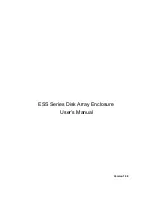
20
Re
fe
re
nce
Listening to the Radio
(see pages 7 and 8)
Using Preset Tuning:
• If you store a new station into an occupied preset number,
the previously stored station in that number will be erased.
• To prevent the preset stations from being erased because of
a power failure, etc., install memory backup batteries in the
System. (See page 4.)
Playing Back Discs/USB Devices
(see pages 9
to 12)
Playing Back a Disc/a USB Device
• When you change the source to CD or USB MEMORY, it
may take a while to activate the source.
• This System can recognize up to 4 000 tracks on a disc/
USB mass storage class device. Also, the System can
recognize up to 150 tracks per group and up to 99 groups
on a disc/USB mass storage class device.
– If there are any unplayable files in a folder, those files are
also counted in the total file number.
– Playable files which do not belong to any group are
handled as group 1.
• Resume Play does not work when you turn on the System
by pressing [
(Standby/On)] on the main unit or
[STANDBY/ON
] on the remote control.
• For the playback of files on a USB mass storage class
device...
– When connecting a USB mass storage class device, refer
also to its instructions.
– JVC bears no responsibility for any loss of data on the
USB mass storage class device while using this System.
– You cannot send any data to your USB mass storage
class device from this System.
– You can charge the connected USB mass storage class
device while USB MEMORY is selected as the source.
– Connect one USB mass storage class device to the
System at a time. Do not use a USB hub.
– When connecting with a USB cable, use the cable whose
length is less than 1 m.
– While playing back a file on a USB mass storage class
device, do not disconnect the device. It may cause
malfunction on both the System and the device.
– It will take some time to start up a Digital Audio Player
larger than 1 Gigabyte.
– This System cannot recognize a USB mass storage class
device whose rating exceeds 5 V/500 mA.
– This System is compatible with USB Full Speed (not
compatible with USB 1.1).
– This System may not play back some USB mass storage
class devices.
– While the System is reading a disc, changing the source
to USB MEMORY may cause the System to continue
playing back the CD source. In this case, press
7
to
reactivate the USB source.
– You can play back the following types of files on a USB
mass storage class device (maximum data transfer rate: 2
Mbps): MP3, WMA, WAV.
– You cannot play back a file larger than 2 Gigabyte.
– When playing a file which has a large transfer rate,
sounds may be dropped during playback.
• For MP3/WMA/WAV playback...
– This System can play back MP3/WMA/WAV files with
the extension code <.mp3>, <.wma>, or <.wav>
(regardless of the letter case—upper/lower).
– It is recommended that you make each MP3/WMA file at
a sampling rate of 44.1 kHz and at a bit rate of 128 kbps.
For WAV files: 44.1kHz/16bit. This System cannot play
back files made at a bit rate of less than 64 kbps.
– This System can play only a disc of ISO 9660 Level 1 or
Level 2.
– This System may not play back some files even though
their formats are listed above.
– This System does not support DRM (Digital Rights
Management).
– MP3/WMA/WAV discs require a longer readout time
than regular CDs. (It depends on the complexity of the
group/file configuration.)
– Some MP3/WMA/WAV files cannot be played back and
will be skipped. This results from their recording
processes and conditions.
Listening to an iPod
(see pages 13 and 14)
Playing the iPod
• Sound distortion may occur when playing back audio
sources with high recording levels. When this occurs, it is
recommended to turn off the equalizer of the iPod, or turn
on the sound check function of the iPod. For information
on operating the iPod, refer to the instructions supplied
with your iPod.
• JVC is not responsible for any loss of or damage to an iPod
that might result from the use of this product.
• When you connect your iPod to the cable, make sure it
connects all the way in.
• Do not carry the System with an iPod connected. You
might drop it down or it might cause damages to the
connectors.
• Do not touch or hit the iPod terminal pins or the connector
pins directly. They might be damaged.
• Remove the iPod from the cable when not in use.
• You cannot send any data to your iPod from the System.
RD-HA3[A].book Page 20 Friday, June 1, 2007 5:37 PM






































